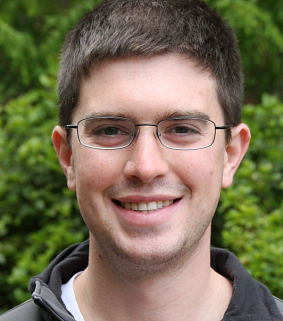Track: PV/Semiconductor
Undergrad: University of Victoria, Victoria, BC - Chemistry
Internship: Fairchild Semiconductor
Current Job Title: Process Engineer at Tesla
In 2010, I had the opportunity to learn about the some of the fundamentals of modern day technology. The program taught me in depth knowledge of semiconductor processes, characterization and measurement. In addition, it offered me the ability to apply these concepts in a laboratory setting surrounded by my peers. Afterwards, I obtained an internship with Fairchild Semiconductor and worked there for five years before changing direction and taking a position with Tesla at the newly opened Gigafactory 1.
In my undergrad senior year I became intrigued with material sciences. With the emergence of smart phones, flat screen TVs and LED lighting I figured this was a field with some exciting career paths. I saw the program as a way to continue this interest and, more importantly, gain some real world experience though the internship program. The classes gave me enough technical knowledge to contribute in industry as an intern. More importantly it began to develop my soft skills like problem solving, time management, effective communication and analytic techniques.
My job title at Fairchild Semiconductor eventually became process sustaining engineer after internship and interim positions. The job was to support 24/7 manufacturing in the USA. We primarily made power transistors for companies like Apple and Huawei. This industry was mature and the equipment was well understood. I was responsible for process control in a department called Etch. Etch is the process where one of more layers of the substrate are controllably removed, often in a specific pattern. I worked on toolsets that used wet, chemical etch processes and dry, plasma processes. My goal was to improve the cost effectiveness of my area. I primarily focused on the concept of Overall Equipment Effectiveness (OEE) as opposed to capital expense projects. Provided there was no impact to overall quality, we looked to make improvements to equipment availability, product yield and factory cycle times. Provided there were no major issues with the manufacturing process, I worked on continuous improvement projects focused on improving OEE. That being said, there were plenty of days where things did not go to plan. In these critical times, it was important to understand what changed. The first step was to typically contain or mitigate the problem. Next was to find and understand the root cause while also implementing systems to prevent re-occurrence. The last step was to globalize changes and learning across toolsets and the factory. It was in this role that I learned fundamentals about manufacturing and became proficient with structured problem solving.
In 2015, I took a job with Tesla to work with their emerging Energy Products. The job was still in manufacturing but the field was different: electro-mechanical troubleshooting, custom equipment and much faster paced. I picked up new skills and improved existing skills like data science, data acquisition and controls concepts. These concepts include statistics, reporting of key performance indicators, data visualization, database queries, integration of application programming interfaces, use of human-machine interfaces and a variety of other electro-mechanical control concepts. Though my greatest influence is probably through process control. Essentially, once something is set up and running well, making sure it continues to perform at defined targets and to improve on department goals quarter after quarter. In 2017 we made headlines by completing a 100MW / 127 MWh battery system in less than 100 days that would be used with wind and solar. It has reportedly saved the South Australian government $40M in its first year of operation. It was a difficult but rewarding project. I am proud to say I contributed to the success of this project. Climate change is real and I am helping to accelerate the world's transition to sustainable energy.
So what does all of this have to do with my experience at the University of Oregon? The program mimics real world conditions and problems. It prepared me for industry. It put me on a rewarding and exciting career path. It has made me a better engineer.

